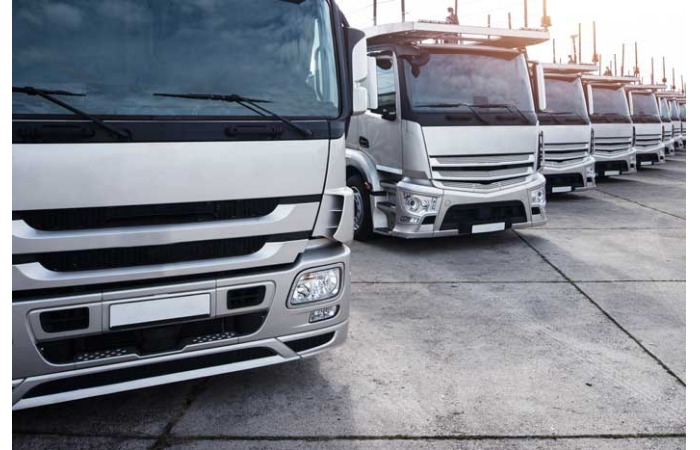
CV industry expects turnaround in H2FY25
The commercial vehicle (CV) industry in India witnessed remarkable year-on-year volume growth during FY22 and FY23 of around 30.7 per cent and 28.7 per cent respectively. This surge was fuelled by pent-up demand as the economy recovered from the Covid-19 pandemic. Medium and heavy commercial vehicles (MHCVs) and light commercial vehicles (LCVs) played pivotal roles in driving overall sales volume within the commercial vehicle sector. Improved industrial and infrastructure demand drove MHCV growth while LCV was boosted by sustained growth in e-commerce.
During FY24, the CV industry faced unexpected challenges, resulting in muted volume growth of 0.7 per cent. This was on account of a fading pent-up demand in the domestic market, sluggish overseas demand and higher vehicle costs due to the transition to BS VI emission norms. The industry had witnessed pre-buying in the March 2023 quarter ahead of the implementation of the BS-VI emission norms, which increased vehicle prices by up to five per cent from April 2023, leading to lower demand in H1FY24. Further, sales in H2FY24 were partially restricted on account of a slowdown in the pace of execution of infrastructure projects due to general elections. Additionally, weak rural demand persisted as rural incomes did not keep pace with rising vehicle prices.
As elections have concluded and the monsoon season subsides by September-October 2024, the second half of FY25 (H2FY25) is anticipated to show signs of recovery in the CV industry. Expected interest rate cuts may provide relief in vehicle financing. Replacement demand and mandatory scrapping of older government vehicles are expected to support volumes in FY25. However, despite these positive expectations, the overall CV industry is likely to experience a degrowth of 3 to 6 per cent in FY25.
Despite the overall challenges in CV sales, there are contrasting trends expected for MHCV and LCV in FY25. MHCVs are expected to improve in the second half of the fiscal year due to infrastructure development post-monsoon. However, LCVs may face constraints due to rising vehicle prices, high interest rates, and inflation, as individual or small local transport operators who are the major buyers of LCVs, may defer their fleet expansion plans due to their limited financial ability to absorb or pass on increased costs.
Electrifying its way
Between FY21 to FY24, the electric vehicle (EV) segment experienced substantial growth, despite its smaller share in overall CV sales. Key indicators of this growth include increased adoption rates and a rising market share, aided by the gradual expansion of the EV infrastructure. Notably, this transition to EVs is particularly evident in the e-bus and light commercial vehicle (LCV) categories.
LCVs, including delivery vans and small trucks, are actively transitioning to electric power. Their role in last-mile logistics makes them ideal candidates for electrification. The appeal of EVs lies in their lower operational costs (both fuel and maintenance), which attracts fleet operators.
Additionally, e-buses have emerged as significant drivers of EV adoption within the CV sector. The demand for e-buses is fuelled by the need for cleaner transportation alternatives, and government initiatives further support this transition.
A surge in demand for electric buses across major cities in India is likely to support the growth of CV going ahead. The increase in demand for electric buses across India can be attributed to various factors, including rapid urbanisation leading to an increase in demand for sustainable and cleaner public transportation systems, heightened environmental concerns, large oil import bills due to diesel-run vehicles, technological advancements and improvements in battery charging infrastructure. Further, the Indian government, recognising the need for cleaner public transportation, has rolled out several initiatives to promote electric mobility.
These include the Faster Adoption and Manufacturing of Hybrid and Electric Vehicles (FAME) scheme and the National Electric Mobility Mission Plan (NEMMP).
In FY24, registrations of electric heavy passenger vehicles (e-HPVs), primarily large electric buses, surged significantly. The number of registrations increased from a mere 217 units in FY21 to an impressive 3,400 units in FY24. Registration of electric LPV (e-LPV) also surged from 360 units to more than 10,500 units during the aforementioned period.
Looking ahead, the demand for electric buses is expected to remain robust in the coming years due to the growing focus on cleaner transportation systems and various government initiatives. Notably, last year, the government unveiled the PM e-bus Sewa Scheme, allocating a substantial $2.4 billion to deploy and operate 10,000 electric buses through a public-private partnership model across 169 eligible cities. These eco-friendly vehicles are set to hit the roads in 2024, with full deployment anticipated by 2026.
CareEdge Ratings’ view
“The CV industry is expected to experience sluggish growth, with overall sales volume likely to decline by around 3 to 6 per cent in FY25. Several factors contribute to this, including general election-related disruptions, elevated vehicle costs, and high channel inventory levels. However, there is hope for improvement in the latter half of FY25 as infrastructure projects pick up pace post-monsoon and anticipated interest rate cuts provide some relief,” said Arti Roy, Associate Director at CareEdge Ratings.
“The Indian CV industry had witnessed its highest sales volume in FY19, and post Covid the industry was on track to surpass the same post significant improvement in sales volumes in FY22 and FY23. However, it faced a few hurdles in FY24 due to higher channel inventory, the impact of the transition to BS-VI norms, a rise in vehicle cost and high interest rates. Looking ahead, the sales volume is expected to degrow in FY25 before gathering pace in FY26,” said Hardik Shah, Director at CareEdge Ratings.
Courtesy: CARE Ratings


 +91-22-24193000
+91-22-24193000 Subscriber@ASAPPinfoGlobal.com
Subscriber@ASAPPinfoGlobal.com